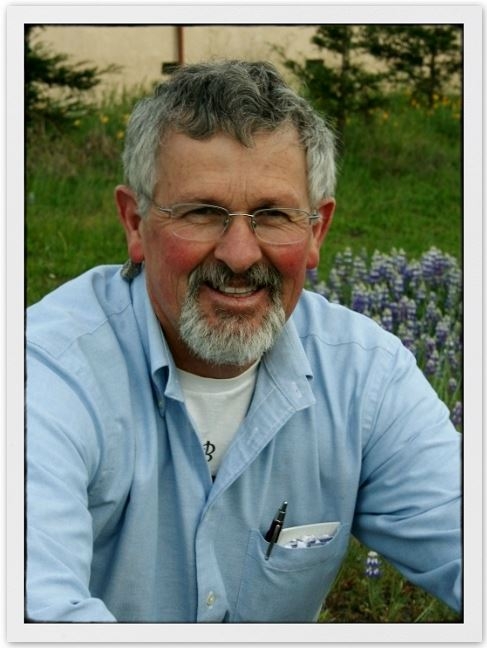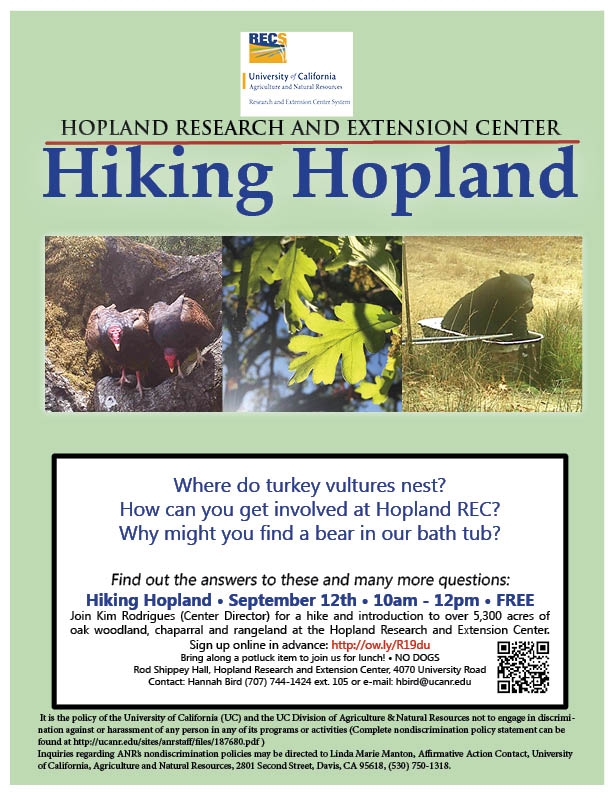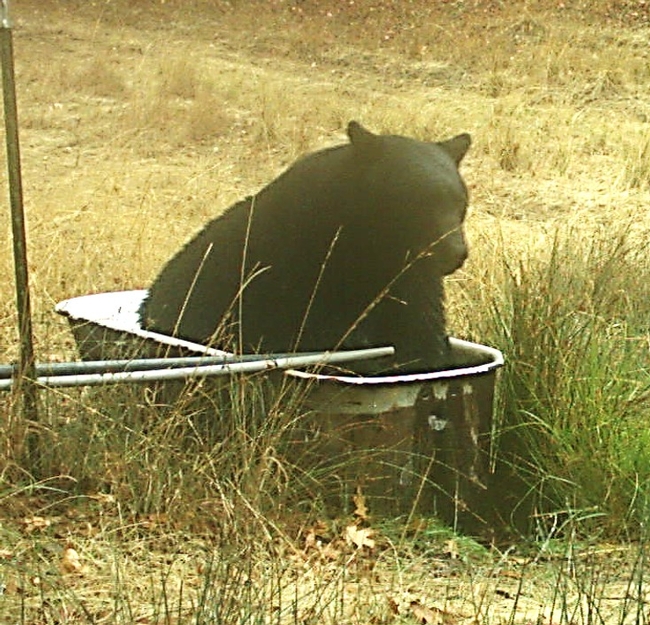- Author: Hannah Bird
Follow this link to see our June newsletter and meet our researchers!
http://us10.campaign-archive1.com/?u=32b1d74684fe8cfb160cb78a8&id=29c5f6133e&e=836c2bac99
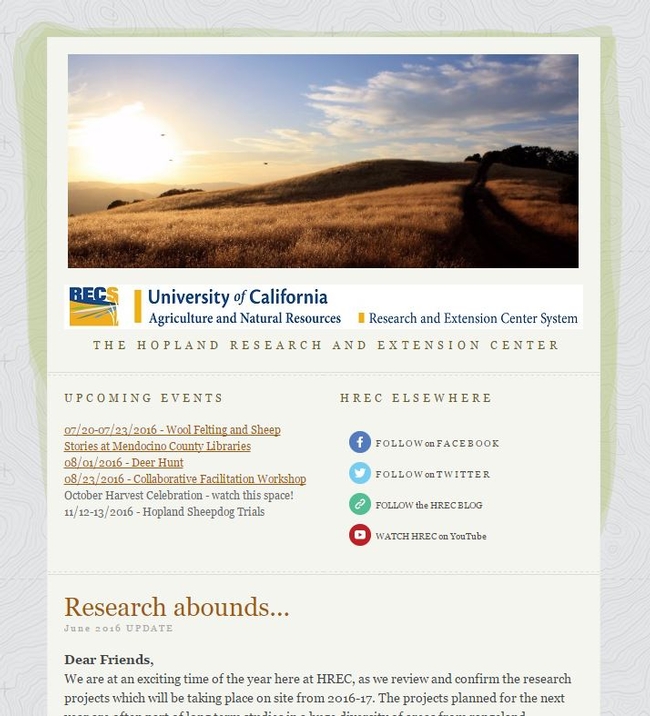
- Author: Hannah Bird
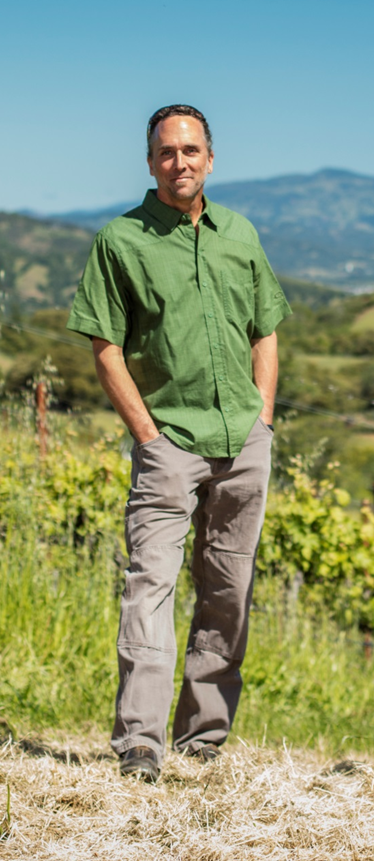
“Dave's education and experience prepare him well for the diversity of management challenges and opportunities we currently face while supporting relevant and timely research at Hopland. Dave's established working relationships with our community partners will advance our research and outreach efforts and strengthen our current team efforts.” commented Dr. Kim Rodrigues, Hopland REC Director. The job of superintendent at the Hopland REC has always been something of a balancing act – mixing the needs of many and various research projects on the site with the desire to practice sustainable land management. Just one of the challenges that Koball will be working on is the efforts the center is making to run an active ranch while also respecting the wide diversity of native wildlife that shares the site with the flock of over 800 Western whiteface sheep.
“I am thrilled and honored to become a member of the knowledgeable, dedicated, and enthusiastic team at the University of California Hopland REC. It is my hope that my background in research from earlier in my career and more recent winegrape industry experience and contacts will help me to increase the visibility, and usability of this gem of a resource that we have here in our backyard. The Hopland REC is a very representative sample of inland Mendocino county, and has features in common with many areas of California, making it the perfect area for research on natural resources, ecology, and different agricultural products from winegrapes to sheep and other new up and coming crops. With a base elevation of 500 feet and upper elevation of 3,000 feet, the ranch is topographically diverse and absolutely beautiful! I am really looking forward to entering the California Naturalist program that is run from the Center, as well as participating in many of the public events held there, from sheep shearing to the monthly hikes. I feel very fortunate to be able to have this fantastic opportunity to learn more about nature and biology while continuing to live and work in Mendocino County.” described Mr. Koball when asked about his hopes for the position. Koball's addition to the team marks an important time at the center as a number of new positions, including the directorship have been filled in the last 2 years. “This is an exciting time for Hopland REC, with a great team now ready to meet the challenges of our times and to share what we learn with our local community” commented Rodrigues.
There are opportunities to visit the center and meet Hopland REC staff at upcoming events, sign up for our newsletter to be kept up to date!
- Author: Hannah Bird
As one of the 9 UCANR Research and Extension Centers (RECs) across California, Hopland REC offers opportunities for research projects across a variety of disciplines particularly those requiring rangeland, oak woodland and chaparral environments. While respecting that need we also have the desire to behave as exemplary stewards of the land, setting examples and raising awareness as we change and improve our methods.
One important lesson that has allowed us to learn and spread knowledge has been from the history of our site. Dr. Donna Gillette has conducted research at HREC since 2006 when it became evident that some of the ancient petroglyph style markings to be found on the 5,358 acre site were likely to be over 2000 years old. Many of these markings take the form of circles carved into large rocks and are described as “Pecked, Curvilinear, Nucleated” markings (PCN's). Following Dr. Gillette's work we discovered that these markings were in fact between 5-8000 years old, pre dating Pomo culture (as we know it).
This fascinating research led us to ask questions about what kind of behavior is appropriate around such important discoveries. Can we touch these markings without degrading them further? Can we show them to the public? How do our Tribal partners feel about such finds? How do they affect land management decisions?
Our own journey led us to work more closely with our local Tribal Historic Preservation Officer (THPO), Shawn Padi of the Hopland Band of Pomo Indians. This partnership has most recently contributed to our “Archaeology for All” event, featuring both archaeologist Dr. Gillette and THPO's Shawn Padi and Hillary Renick on Saturday, October 10th. This event was planned in close collaboration with the Society for California Archaeology, the mini grant that we received enabled us to support the travel costs of our wonderful volunteer speakers, while the Hopland Band of Pomo Indians provided the lunch.
Over 100 members of the public and 30 children attended this event at which we discussed our local history, cultural markings that might be found on our landscape and why it is important to leave any discoveries of artefacts or markings just as you find them and report to your local THPO. Children got the chance to become archaeologists themselves and saw directly how difficult it can be to piece together our history when pieces of the story might have been removed or broken!
Piecing the past together – students try to put together the pieces of broken pottery they have located and mapped – it's not always easy when others have taken some of the pieces as keepsakes.
The challenge of balancing current demands from our natural resources and culturally important sites can be complex. However learning from the history of people in our area is a vital step in understanding sustainable use and behavior for the future. The Hopland Research and Extension Center have benefitted greatly from relationships such as those with local THPO's, their knowledge is integral future land management decisions.
- Author: Hannah Bird
A little late in the month, but here is our August newsletter!
http://us10.campaign-archive2.com/?u=32b1d74684fe8cfb160cb78a8&id=8ad396ce85&e=[UNIQID]
And more about our upcoming "Hopland Hikes" event:
"Over 5,300 acres of oak woodland, chaparral and rangeland will be opened up on Saturday, September 12th from 10am-12pm for a guided public hike at the Hopland Research and Extension Center. Dr. Kim Rodrigues the Center Director will guide visitors on a 2 hour hike and share some of the exciting research and education activities, how the public can get involved at the site and where bears like to bathe!
This black bear has been captured on trail camera, enjoying a break in one of the water troughs at HREC, during a study conducted by Dr. Justin Brashares which examines how wildlife movement is affected by fencing.
“The Hopland Research and Extension Center (HREC) is one of 9 centers across the state owned by the University of California Agriculture and Natural Resources division. This is a great opportunity for the public to visit the site and learn about the important research that has been conducted here over the last 60 years. Research projects have encompassed many different disciplines ranging from Dr. Bob Lane's groundbreaking research into Lyme disease and other tick borne diseases to Dr. Donna Gillette's work on ancient petroglyph style markings on the site, found to be over 5000 years old! This is a great opportunity for the public to visit this beautiful property, we are also hoping to build a community of docents to help run these hikes on a monthly basis in 2016. There is so much to see on the site we can't cover it all in just one hike!” Commented Hannah Bird, Community Educator at HREC.
Participants are encouraged to wear clothing suitable for hiking whatever the weather and to bring a water bottle. Hikes will take place on roads or trails – but terrain may be steep and uneven at times. No dogs are allowed on the hike due to the presence of guard animals on the site used for sheep protection.
Those who would like to share a potluck lunch after the hike are encouraged to bring along plates, utensils, cups and an item of food to share.
This is a free event but participants are encouraged to sign up in advance at: http://ow.ly/R9BJo . Hikers will meet at the Rod Shippey Hall, 4070 University Road, Hopland CA 95449 at 10am on Saturday, September 12th. For more information contact Hannah Bird, (707) 744-1424, Ext. 105, hbird@ucanr.edu.
- Author: Hannah Bird
As many of you are no doubt already aware, the end of June marks the end of over 30 years of dedicated service by Bob Keiffer to the Hopland Research and Extension Center. Bob has been the brains and eloquence behind this blog since it's inception and we hope to continue to feature him as a guest writer into the future.
You can enjoy comments from some of the various researchers with whom he has worked by taking a look at our most recent newsletter: http://us10.campaign-archive2.com/?u=32b1d74684fe8cfb160cb78a8&id=0d5c177fbf&e=[UNIQID]
The Hopland REC blog will continue with entries from various staff and researchers to keep you up to date on recent discoveries, events and opportunities.
If you have a topic or area of interest that you hope the blog will cover, please comment and let us know.
In the mean time I am sure you would all join me in wishing the wonderful Bob K. some well earned relaxation and perhaps a sighting of an ivory billed woodpecker! Here's hoping!